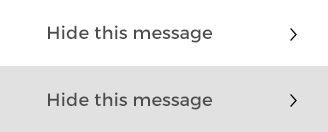
About
Summary
A niche tourism market is a specific market segment, usually with a well-defined product, that can be tailored to meet the interests of the customer. Examples for the Falklands include bird watching and conflict (battlefield) tourism. Niche does not necessarily mean small – niche markets can generate large numbers of tourists. Also, niche market tourists are not necessarily high spenders (although many are), therefore developing niche market tourism does not necessarily increase the average spend of tourists, however they are good for diversifying the product, minimising the effects of seasonality, and reducing pressure on “honey pot” areas by distributing tourists to lesser-visited places on the islands.
This study provided the Falkland Islands Tourist Board with detailed profiles of six niche tourism markets, all of which were already available in the Falkland Islands, although their level of product development and sophistication varied. The purpose of the study was to provide guidance to the Tourist Board and the private sector on how to develop the niches and make them into successful markets in the Falklands.
Our Approach
According to previous research undertaken by the Falkland Islands Tourist Board, competing destinations that have a similar product to the Falklands are the Galapagos, Arctic, Madagascar, Scottish Highlands, Guyana and African safari locations. Destinations that have similar target markets to the Falklands are thought to be New Zealand, Scandinavia, Canada and Australia. However, tourists considering going to these countries are unlikely to switch their destination to the Falklands unless they are looking for somewhere where they can experience their niche interests (e.g. bird/wildlife watching, battlefield tours, etc). In these instances the Falklands can be considered as a competitor.
Therefore, the focus of this market research was on profiling six niche tourism segments: bird watching, fishing, conflict tourism, trekking, marine tourism and yachting. For each profile the analysis followed the same format, which included a definition, estimate of global size, potential for growth, brief profile of consumers, main source markets, main competing destinations, selected tour operators, ands key points for marketing and distribution.
Outcome
The report was instrumental in the development of all six segments over the following six years, and their inclusion in the 2016 Tourism Strategy as part of the strategy for growth to 2023. The profiles have also been published as fact sheets for distribution to private sector operators.
Directions
Projects Nearby
Study to assess the economic impact of the cruise sector in the Falklands, focusing on…
Evaluation of rural tourism and self-catering accommodation market trends, appraisal of…
Design, development and implementation of a green tourism scheme for accommodation…
Development of a series of tourism satellite accounts for the Falkland Islands since…
Assistance to the Falkland Islands Tourist Board providing regular updates on the likely…
Designed and implemented an accommodation accreditation scheme for serviced and…
Whilst only 10% of the Falklands population live outside of the capital, Stanley,…
Each year Acorn compiles all the tourism statistics for the Falkland Islands into a…
The Tourism Recovery Incentive Programme (TRIP) was part of the Falkland Island…
Survey to gain insight into the users of the Falkland Islands Tourist Board website, and…
Design and implementation of a face-to-face air visitor exit survey capturing visitor and…
Development of a prospectus to encourage investment for a chain of luxury lodges in the…
To monitor the tourism sector and enable regular and up-to-date reporting of visitor…
Implemented a Digital Marketing Strategy for the Falkland Islands Tourist Board with the…
Developed an eight-year Tourism Development Strategy for the Falkland Islands with the…
Analysis of the times and costs of air travel to the Falkland Islands from various key…



.png)





